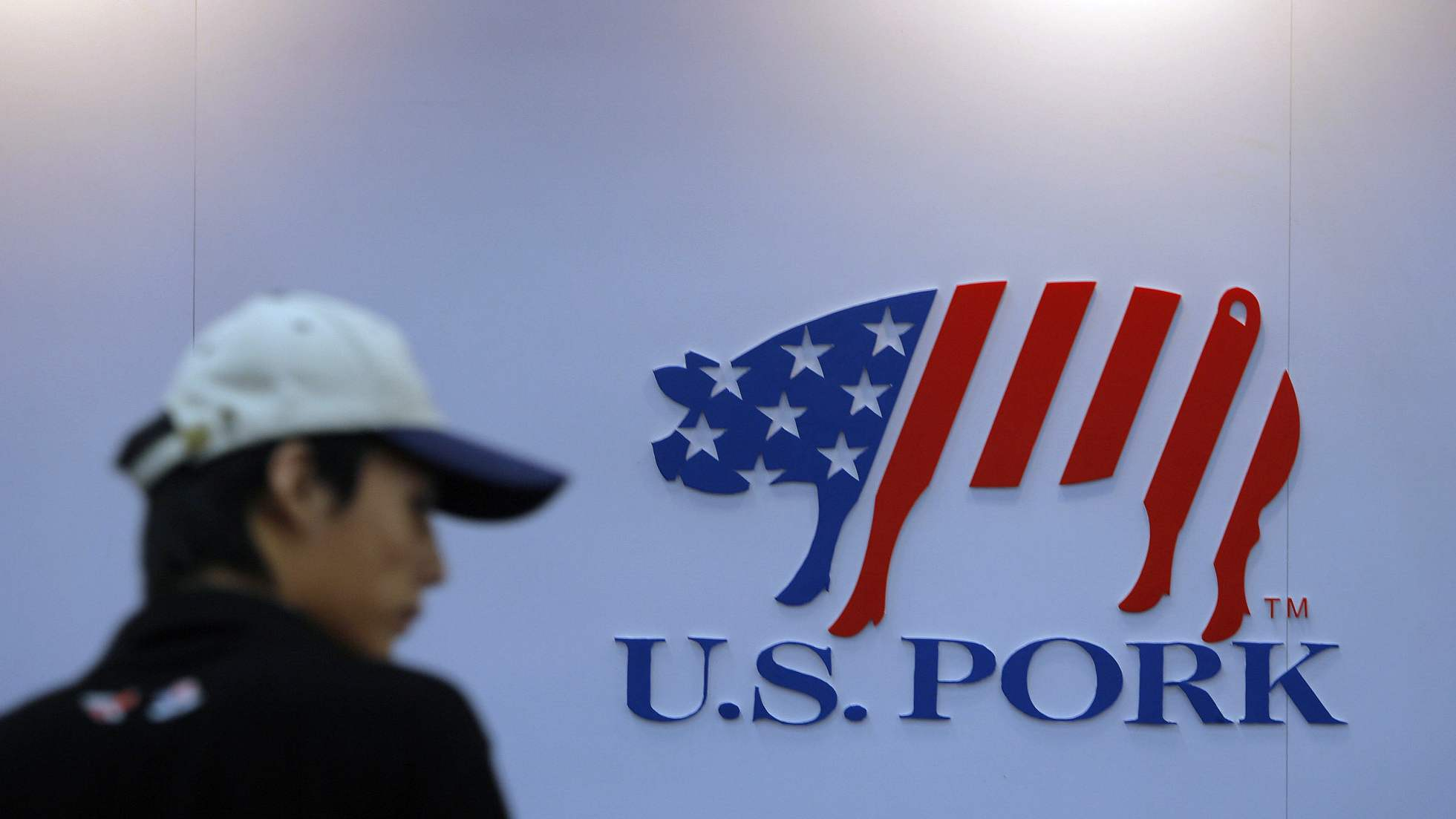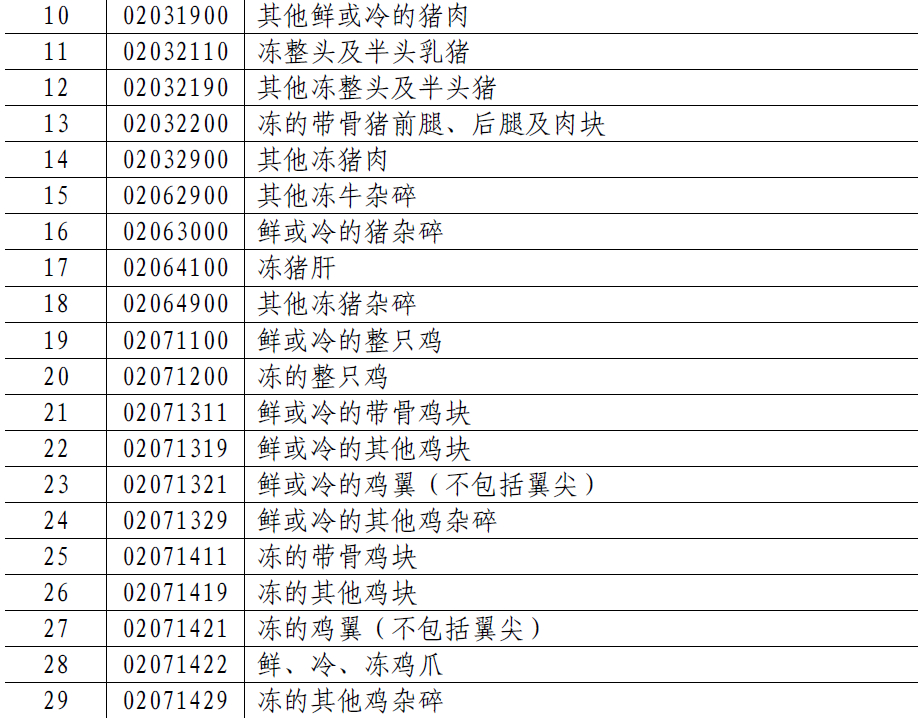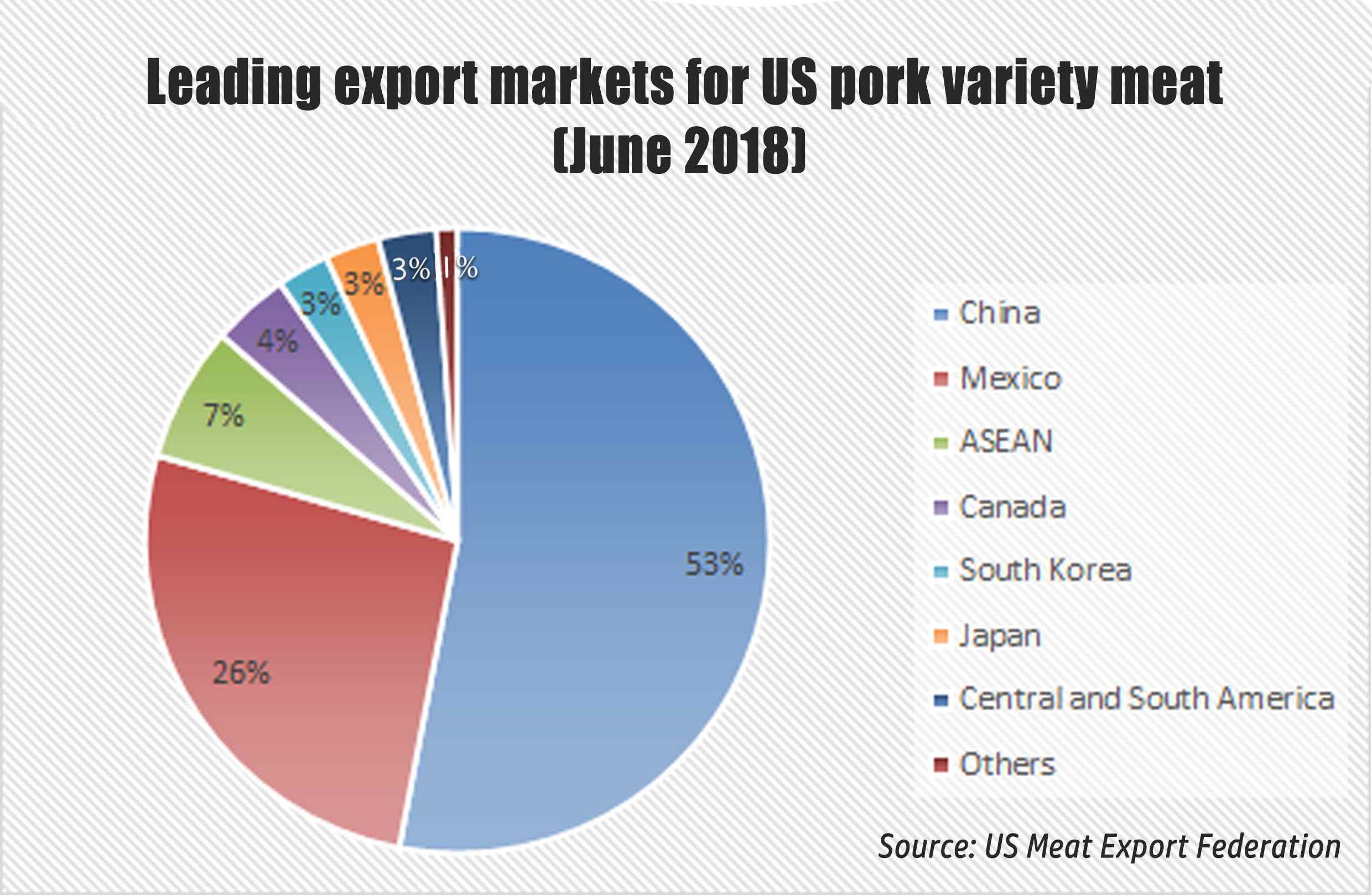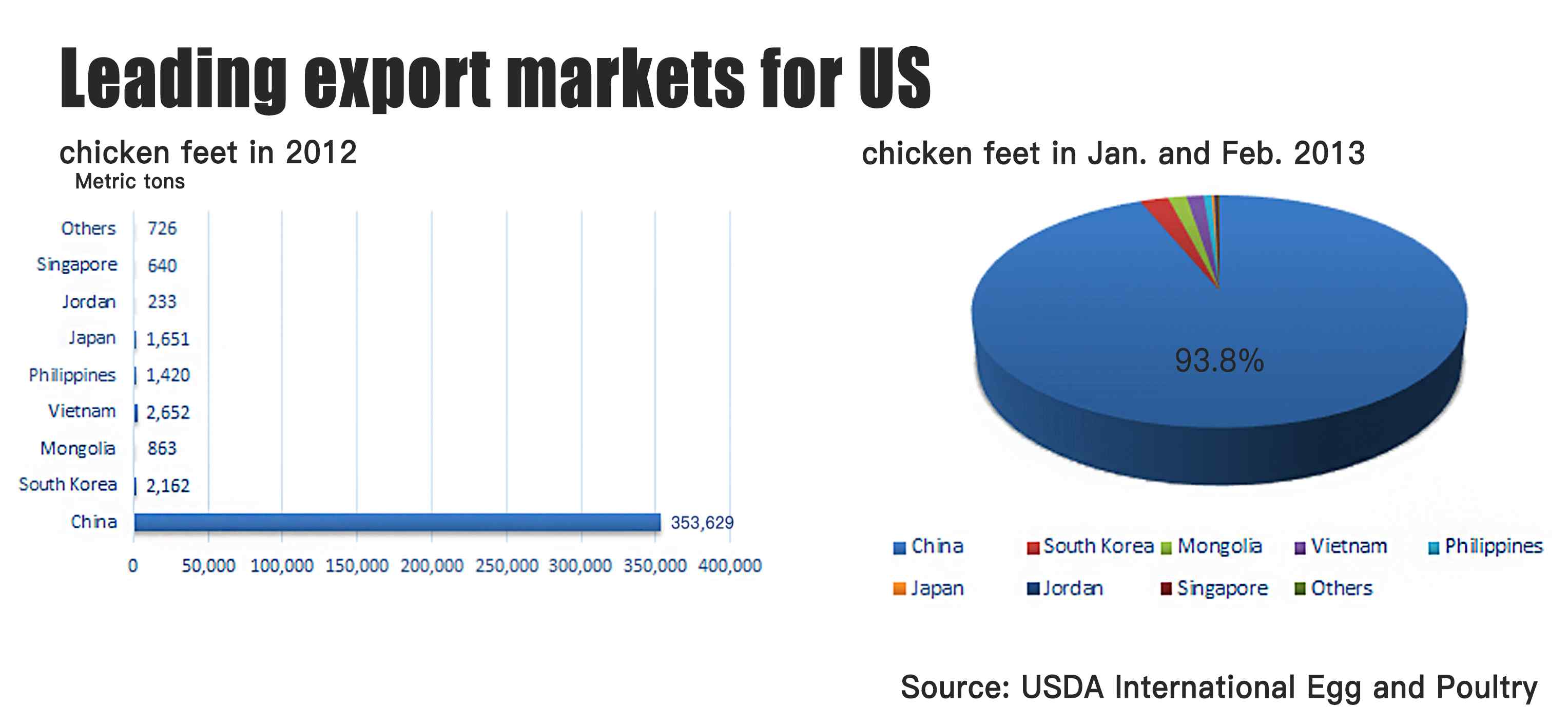
Business
15:15, 05-Aug-2018
US food industry hit by China’s tariff strike
Updated
14:49, 08-Aug-2018
CGTN

China on Friday unveiled the new sets of additional tariffs on 60 billion US dollars’ worth of US goods in response to the US tariff threat of 200 billion US dollars' worth of Chinese imports.
The additional 25 percent tariffs cover the largest share of the overall list and are mainly imposed on vegetables, meat, metals and chemicals, which could bring harm to the US farming and mining industries.
China’s tariff list unveiled on June 16 took effect earlier in July, some US food producers have already felt the punch from one of the largest export markets.

Pork, chicken, fresh or frozen chicken wings and feet are included in the list that took effect on July 6. / MOFCOM Photo
Pork, chicken, fresh or frozen chicken wings and feet are included in the list that took effect on July 6. / MOFCOM Photo
The list of 659 additional items, worth 50 billion US dollars and facing a 25 percent tariff, covers a wide range of products, among which agricultural products and foods are in the majority.
Pork variety meat and chicken feet
This July witnessed a bleak pork market in the US as both the spot and futures prices of hogs and the stocks of pork products kept falling.
Affected by the trade frictions, the export of US pork variety meat has decreased by about 33 percent from April to May this year, according to the US Department of Agriculture. Mexico also raised the tax rate on US pork to 20 percent as a way to fight against the US aluminum and steel import tariffs.
Chinese foodies enjoy pork by-products such as pig feet, pig ears and intestines, which are big sellers in the Chinese consumer market.

CGTN Photo
CGTN Photo

CGTN Photo
CGTN Photo
China has become the largest export destination for US pork variety meat. In June alone this year, China’s import of US pork variety meat accounted for 53 percent of all its destination markets, according to the US Meat Export Federation.
Driven by the escalated trade war, China was forced to impose a 25 percent tariff on US agricultural products, forcing the booming pork by-products export business to a halt.
American meat producers like WH Group and Tyson Foods all reported a slump in both profit and stock caused by the trade dispute.

CGTN Photo
CGTN Photo
Another Chinese “snack” is chicken feet. China is the largest chicken feet importer of the US. China (Hong Kong and Taiwan are included in the business) imported 353,629 metric tons of chicken feet from the US in 2012, according to the USDA International Egg and Poultry, accounting for 93.8 percent of the total. The US poultry industry is cashing in as a whopping amount of the delicacy ships to China.
However, the snack is also on the list, which surely brings huge losses to the industry as almost no one consumes this part in the US or other countries.
Whiskey
A 25 percent tariff on US whiskies destined for China could halt 8.9 million US dollars in annual whiskey exports and harm both the interests of Chinese consumers and American farmers, according to the Distilled Spirits Council.
In 2017, bourbon whiskey contributed 8.5 billion US dollars to Kentucky, the main producer of whiskey, creating 17,500 jobs. Kentucky winemakers are also increasingly valuing the Chinese market as the growing middle-income population brings greater business opportunities.

Bourbon whiskey. /VCG Photo
Bourbon whiskey. /VCG Photo
In 2017, China’s imports of whiskey from the United States increased by 15 percent year on year.
American spirits exports to China have grown by almost 1,200 percent, from 959,000 US dollars in 2001 to 12.8 million US dollars in 2017, according to the Distilled Spirits Council.

Orange juice, whiskey and dross are included in the list that took effect on July 6. / MOFCOM Photo
Orange juice, whiskey and dross are included in the list that took effect on July 6. / MOFCOM Photo
Moreover, the US Brewers Association has established cooperative relationships with dealers in first-tier cities in China.
The association this February said that China is a relatively open market as the tariff is only 10 percent, and last December, China lowered the tariff to 5 percent. The tariff hike is the least thing they want to see.
The growing number of Chinese consumers, however, will not be affected because of substitutes from Ireland, Scotland and Japan.

SITEMAP
Copyright © 2018 CGTN. Beijing ICP prepared NO.16065310-3
Copyright © 2018 CGTN. Beijing ICP prepared NO.16065310-3